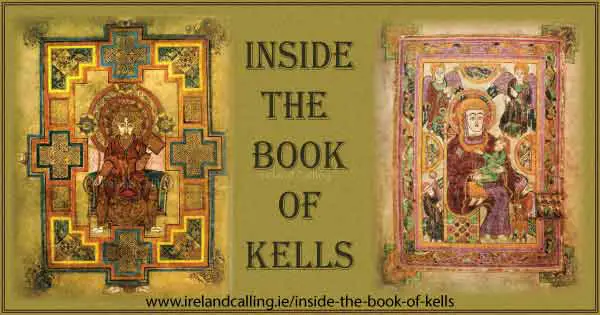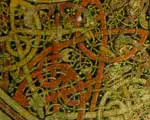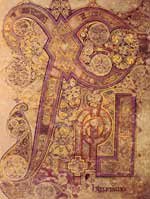The Book of Kells is written in an insular majuscule script which was the calligraphy used by the Irish and British monks for their fine manuscripts.
It contains the four Gospels, Matthew, Mark, Luke and John based mostly on the Vulgate, a Latin version of the bible translated by St Jerome in the 4th century AD and used as the authorised bible by the Roman Catholic Church.

Today the book consists of 339 vellum (calf skin) folios but there used to be more. The front and back few pages are missing, most probably torn off together with the cover during the theft in the 11th century.
Although parts of the Gospel of John and some other material have been lost, the Book remains one of the most spectacular pieces of Insular Art ever created; a beautiful, elaborate fusion of Celtic and Christian cultures.
Church adopted Celtic culture
The policy of the church during this period was to adopt all pagan culture that did not clash with Christianity and use it within its own practice.

This meant the traditional Celtic ornamental design found a new outlet in the creation of illuminated manuscripts used by the church.
A small number of these manuscripts survive today along with the Book of Kells including The Book of Durrow, The Durham Gospels and The Book of Lindisfarne but it is the Book of Kells that contains the largest variety of styles and imagery.
Celtic decorations of intertwining knots and ribbons are combined with images of animals, people and plant life.

Each Gospel has its own front page followed by a page of opening words drawn so elaborately that it is almost impossible to read unless you know what it says.
Perhaps this was done on purpose so only the learned could use the precious manuscript.
In 1953 the Book of Kells was bound into four volumes which are on permanent display at Trinity College. Two of the four volumes can be viewed at any one time; one page showing a major illustration and the other a page of text.
Inside the Book of Kells
More on Irish Art
